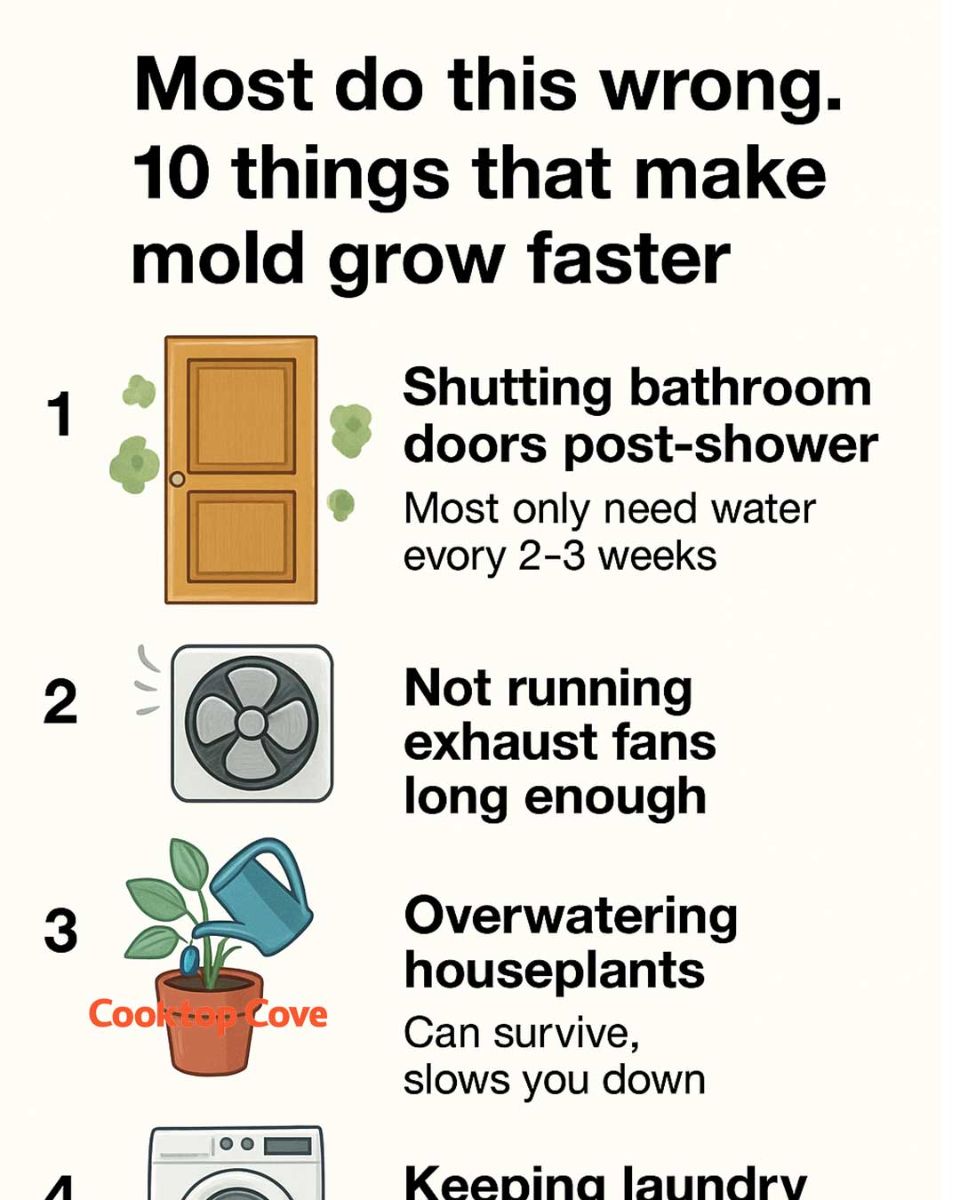3. Overwatering Houseplants
Houseplants can contribute to indoor humidity levels, especially when overwatered. The excess water in the soil can evaporate, increasing the moisture in the air and creating a favorable environment for mold. It’s important to water plants only as needed, allowing the soil to dry out between waterings.
Consider using a moisture meter to check the soil’s moisture level before watering. This tool can help prevent overwatering and reduce the risk of mold growth in your home.
4. Keeping Laundry in Machines Too Long
Leaving wet laundry in the washing machine for extended periods can lead to mold growth both in the machine and on the clothes. Mold can start to develop in as little as 24 to 48 hours in damp conditions. To prevent this, transfer laundry to the dryer or hang it to dry immediately after washing.
Additionally, regularly clean your washing machine, especially the rubber seals, to prevent mold buildup. Running an empty cycle with hot water and vinegar can help keep the machine mold-free.
5. Ignoring Leaky Pipes and Faucets
Leaky pipes and faucets are a common source of moisture that can lead to mold growth. Even small leaks can create a damp environment that supports mold. Regularly inspect your plumbing for leaks and address them promptly. A single drop per second from a leaky faucet can waste over 3,000 gallons of water per year, contributing to moisture problems.
In addition to fixing leaks, consider installing water alarms in areas prone to leaks, such as under sinks and near water heaters. These devices can alert you to moisture issues before they become severe.
6. Poor Ventilation in Basements and Attics
Basements and attics are often poorly ventilated, making them prime locations for mold growth. Without proper airflow, moisture can accumulate, especially in humid climates. Installing vents or fans can help improve air circulation and reduce humidity levels.
Consider using a dehumidifier in these areas to maintain a humidity level below 50%. Regularly check for signs of mold, such as musty odors or discoloration on walls and ceilings, and address any issues promptly.
7. Using Carpets in Damp Areas
Carpets in damp areas like basements or bathrooms can trap moisture and provide a perfect environment for mold. If carpets get wet, they should be dried immediately to prevent mold growth. In areas prone to moisture, consider using alternative flooring materials like tile or vinyl, which are less susceptible to mold.
If you must use carpets, choose those with moisture-resistant backing and regularly clean them to prevent mold spores from settling.
8. Storing Items in Damp Basements
Basements are often used for storage, but if they are damp, stored items can become moldy. Cardboard boxes and fabric items are particularly susceptible to mold. Use plastic bins with tight-fitting lids to protect items from moisture.
Regularly inspect stored items for signs of mold and consider using desiccants or moisture absorbers to help control humidity levels in storage areas.
9. Not Cleaning Refrigerator Drip Pans

